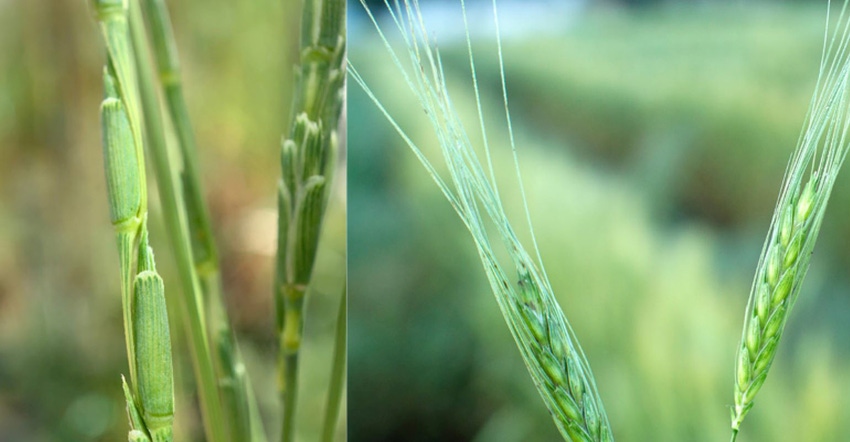June 26, 2020

A Kansas State University wheat geneticist is receiving nearly $1 million from USDA's National Institute of Food and Agriculture through its Agriculture and Food Research Initiative. The funding is for two projects trying to improve the genetic diversity of wheat.
Modern wheat is historically a genetically narrow species. But centuries of focused breeding to increase yields and performance stability has further reduced genetic diversity in most modern wheat cultivars.
As the human population increases and climates become more variable, the lack of genetic diversity in modern wheat has the potential to compromise global food security, according to Jesse Poland, associate professor of plant pathology and director of the Wheat Genetics Resource Center Industry-University Cooperative Research Center at K-State.
Poland will use the grants to mine wheat wild relatives for genes that increase disease resistance, stress tolerance and yield potential. He will look far back into wheat's family tree for solutions at two reservoirs of untapped genetic diversity: Aegilops speltoides and Triticum dicoccoides, also known as wild Emmer.
"These new projects supported through the National Institute of Food and Agriculture are really building on decades of work and genetic resources assembled in the Wheat Genetics Resource Center," Poland says. "Through our current industry partnerships in the Industry-University Cooperative Research Center, we have further strengthened the value of the germplasm collection. K-State is a great place for this work to happen and be successful because we can directly connect the work on wild wheat with companies and breeders delivering the new germplasm to farmers."
The first project is a collaboration between K-State, 2Blades Foundation, the University of Minnesota and the John Innes Center. This team will leverage the extensive Wheat Genetics Resource Center’s collection of wild Emmer to resequence the Emmer genome and identify genes providing resistance to stripe, leaf and stem rust — three diseases that annually cause nearly $3 billion in damage to global wheat crops.
The second collaboration brings K-State plant pathology researchers Bernd Friebe and Dal-Hoe Koo, both of the Wheat Genetics Resource Center, together with Poland and Assaf Distelfeld of the University of Haifa in Israel, to unlock genetic diversity in Aegilops speltoides, a distant wild relative of wheat with huge diversity.
Their work will better characterize the collection of Aegilops speltoides and use this information to identify genetic segments transferred into wheat with the aim of making better genetic markers for wheat breeders to use.
Together, these projects bridge resources and expertise across the globe, spanning from the center of origin of wheat to the center of contemporary wheat production, Poland says. The genetic resources developed across these partnerships will inform rapid development of improved of wheat varieties.
“Overall, these projects really complement the ongoing work of the WGRC to provide robust genetic resources to breeders and see this novel genetic diversity transferred to breeding companies and delivered to farmers," Poland says. "With these exciting international partnerships we can move even faster."
Source: Kansas State University News Service, which is solely responsible for the information provided and is wholly owned by the source. Informa Business Media and all its subsidiaries are not responsible for any of the content contained in this information asset.
Read more about:
ResearchYou May Also Like




